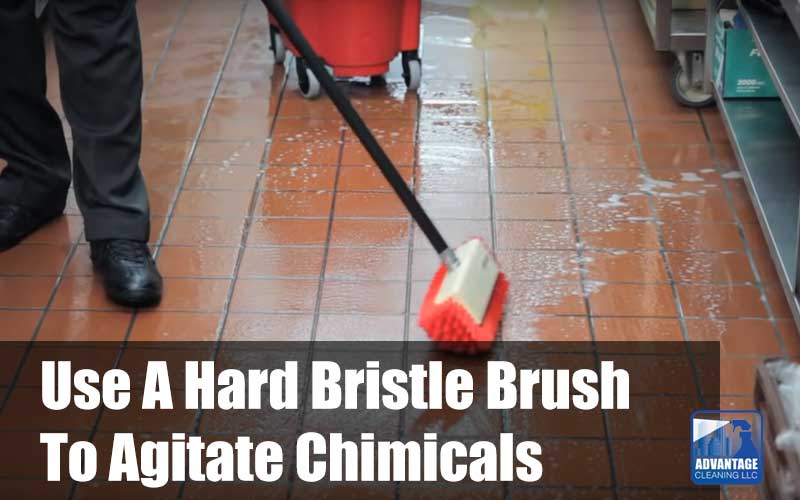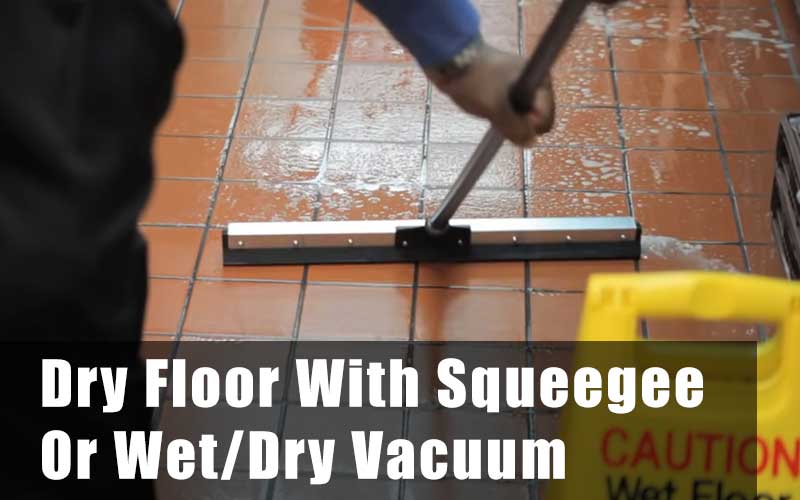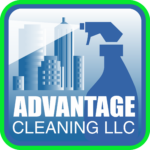In this guide we will cover everything needed to properly clean a restaurant floor, including equipment, chemicals, safety, cleaning process and ongoing commercial floor cleaning. If you’ve been having trouble keeping your restaurant floor clean, this guide will help you understand what issue is causing your problem.
Advantage Cleaning is a commercial cleaning company in New York Metropolitan area and eager to share our commercial cleaning system to help elevate the industry standards.
Dangers Of A Dirty Restaurant Floor
There are several negative effects to having dirty restaurant floors such as health/sanitation problems, unpleasant customer experience which lowers customer return rates and most dangerous is injuries from slipping or falling.
According to the National Floor Safety Institute (NFSI), employees slipping on slick floors take up 85% of worker’s compensation claims and are the number one cause of accidents in commercial kitchens.

This increased risk of injury and higher insurance costs due to dirty floors makes it a very important issue to focus on in your restaurant’s daily cleaning process. Greasy restaurant floors are a major contributor to this problem and require a different approach than other areas of your restaurant.
Tools And Equipment To Clean A Floor
- Synthetic broom
- Dustpan
- Personal Protective Equipment (PPE)
- “Wet Floor” safety signs
- Bristle brush
- A clean mop and mop bucket dedicated for kitchen use only
- Water hose
- Floor squeegee
- Wet/dry vacuum (if needed)
Types Of Dirty Floors And Which Chemicals To Use
Soil is classified as the organic and inorganic matter on any surface that needs to be cleaned.
For all restaurants, having soils on your floors and equipment can create food and safety problems. Here’s a list of the different types of soils and what chemicals to use for removing them.
Protein soils
Protein Soils are identified as a blue or multi-colored film. In a restaurant, this is one of the most common types of soils employees will encounter.
Produced by foods such as milk, eggs, and meat, it is the carbon-nitrogen bonds (C-N) that are removed from the surface by detergents and floor cleaners.
Fat Oils & Natural Oils
Often found in prep areas and cooking areas, fat oils and natural oils from dairy, poultry and meats, sticking to surfaces will appear as a greasy film of white beads. Use a hot alkaline solution to remove this type of floor grime easily.
Mineral Deposits
If your restaurant is in an area where the water is very hard or filled with calcium and minerals, white mineral build up can occur around faucets and other equipment utilizing water. The easiest way to remove these deposits from your restaurant floor is to use acid or delimer.
Greases & Lubricating Oils
Around equipment like slicers, mixers and cooking elements there often collects black film-like greases and oils. You should choose a detergent that includes (or add separately), a strong surfactant of acid or alkali to break down the grease. The surfactant and grease will wash off during the rinsing process.
Steps To Cleaning Your Restaurant Floor
To clean greasy restaurant kitchen floors, follow these steps:
- Remove debris by sweeping the floor
- Prepare chemical degreaser (solution)
- Apply chemical degreaser (solution)
- Agitate the floor (scrub the floor using a stiff-bristled brush)
- Remove all soap and degreaser
- Let the floor air dry

Remove debris by sweeping the floor
Start with sweeping all floors to remove as much dirt and debris as possible. Remember that any dirt on the floor will become mud when wet, making it more difficult to see the grime you’re trying to clean and make more of a mess to clean up. Use a broom with synthetic bristles and make sure to reach under, behind and all equipment.
Prepare chemical degreaser (solution)
Every application can differ depending on soil levels, soil types, and floor types. Based on what we covered earlier on your floor’s soil type and appropriate chemical choice, follow the instructions of that chemical completely. Prepare your solution using the correct dilution ratios and warm water.
Apply chemical degreaser (solution)
With your recommended diluted solution, apply liberally to the floor with a mop or sprayer. Allow the chemical product to dwell and activate with soil levels. For the best results, allow the full amount of time suggested on the label.
Agitate the floor (scrub the floor using a stiff-bristled brush)
Using a deck brush, agitate the solution by working the chemical solution into the grout. Grout is a porous material that can easily trap grease and continually produce bacteria. Allowing your solution to penetrate soil levels followed by agitation with a stiff deck brush will help remove embedded grease.
Remove all soap and degreaser
Remove any excess solution by pushing the product towards your floor’s drain with a squeegee. If floor drains are not available, the floor should be mopped with a bucket of clean hot water, changing the water often.
Continue to remove any excess water and solution by using a clean mop. In a figure 8 motion, work in small sections flipping your mop halfway through.
Be sure to use a clean mop and bucket to remove as much soil and grease as possible.
Dry the floor
Once you have successfully removed the excess water and solution, the floor has to dry. You can use an air blower to speed up the process. We recommend using a floor squeegee to push water towards the floor drains. If your restaurant floor does not have sufficient draining systems, you can use a wet/dry vacuum or even a water extracting machine.

To avoid slip and fall accidents, be sure to notify guests and employees when floors are wet and utilize safety signs. These deeper floor cleaning operations are best done during the off hours to further limit an accident.
Why Floors Get Dirty
Lack of cleaning
If a restaurant floor is not cleaned the way described in this guide on a regular basis, heavy soil build up is guaranteed. Make sure to inspect the floor cleaning on a daily basis to make sure there are no corners being cut with the regular floor cleaning and that will reduce the difficulty of deep cleaning.
Clogged drains
Inadequate drainage systems can be very impactful on the cleanliness of a floor. If dirty water is not removed from a restaurant floor, it will dry up and leave the soil on the floor as if it was never cleaned in the first place.
Tile pores
Any type of hard floor like concrete, tile, stone or brick has a porous surface which means it is like a sponge. When soils are left on the surface for time, it will soak into the pores and become more difficult to get out. In some cases, it can permanently remain in the pores and only removing layers of the floor will get it out.
Dirty mops
One of the biggest culprits of having a dirty restaurant floor is a dirty mop. This is why we recommend having a dedicated mop for the kitchen area. When a mop is not cleaned properly after each use, it holds grease and bacteria that is then reapplied to the floor and spread everywhere during each use.
It is also important to empty and rinse the water bucket if the water becomes too dirty while cleaning the floor. Consider having two buckets when mopping, one for clean, soapy water and another for ringing out the dirty water from the mop before getting more soapy water.
Maintaining A Clean Restaurant Floor
Clean floor once or twice daily
Typically, restaurants will have two shifts morning and night and after lunch hour rush there is a downtime where the shift change or the second crew comes in. Ideally, the morning shift should clean the floor sweeping and mopping, at the end of their shift to have the kitchen area ready for the night shift and the same process with closing the restaurant for the night shift crew. If this is implemented as part of the daily floor cleaning service your floor should remain clean especially if you do regular daily inspections of the floor cleaning.
Keep all cleaning devices cleaned and properly stored
Keeping cleaning equipment clean, easy to find and ready to use is a major asset to a successful maintenance cleaning routine. If your cleaning tools are not taken seriously, it is likely the cleaning is not taken seriously either.
Use floor mats
Using floor mats in areas that are used for food preparation and cooking will protect the floor from getting dirty. Floor mats can be removed and washed separately on a regular basis.



